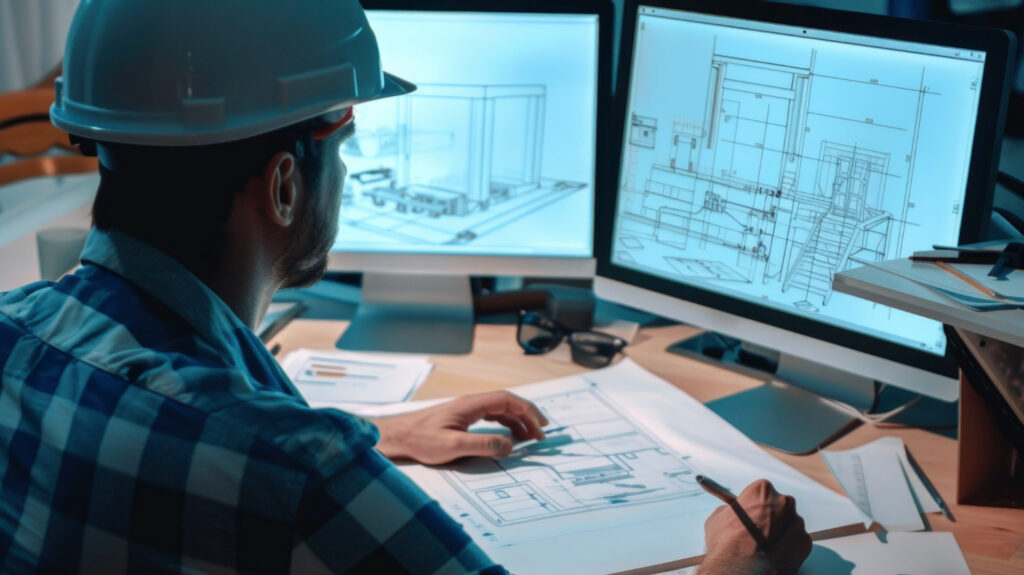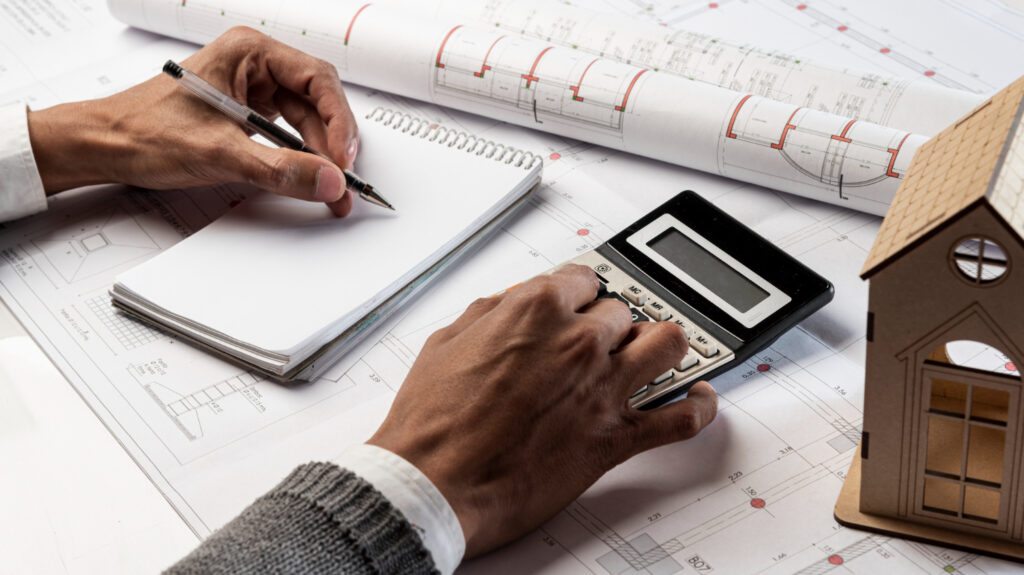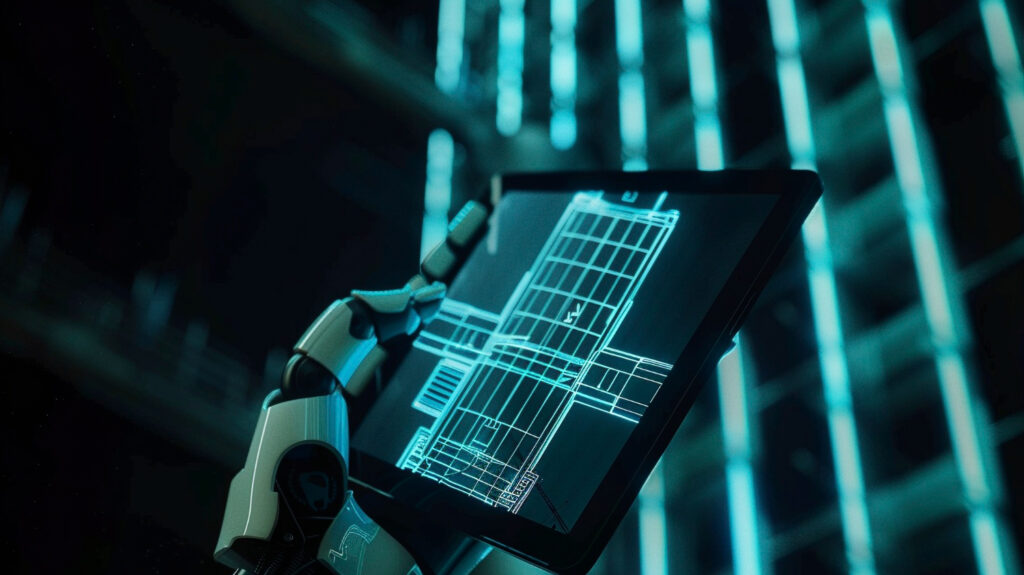Digital Transformation in General Contracting: How Technology is Changing the Way We Build in the UAE
We’re Not Pouring Concrete the Way We Used To. And That’s a Good Thing.
Let’s be honest — construction has always had a bit of a reputation.
Slow to adopt change. Resistant to tech. Dependent on paper trails, sticky notes, and “let’s just figure it out on site.”
But in the UAE — where towers rise in months, not years — the rules have changed.
Digital transformation is no longer optional.
It’s becoming the backbone of how modern contractors operate, communicate, and deliver. From BIM to drones, ERP software to predictive scheduling — tech is giving savvy clients a new level of visibility, speed, and control.
This article is your roadmap. If you’re planning a project — or want to avoid the old-school pain points — here’s what digital general contracting actually looks like today.
What Do We Mean by “Digital Transformation” in Construction?
Digital transformation in construction refers to the integration of technology into every phase of a construction project — from design to handover — with the goal of increasing efficiency, accuracy, safety, and client transparency.
It’s not just about software — it’s about how you manage:
- Data
- Communication
- Processes
- Decisions
- Deliverables
And it’s especially relevant in the UAE, where high client expectations, tight schedules, and regulatory oversight make precision non-negotiable.
Key Technologies Driving the Change
1. Building Information Modeling (BIM)
Let’s start with the big one.
BIM isn’t just 3D design. It’s a digital twin of your project — combining architecture, structure, MEP, and construction logic into a single, live model.
With BIM, we can:
- Detect clashes before site work begins
- Sequence construction visually
- Estimate quantities with pinpoint accuracy
- Track progress in real-time
Dubai Municipality mandates BIM for certain projects since 2014
At PRISTINE, we use BIM on all major builds — especially those involving multiple systems or fast-track schedules.
2. Cloud-Based Project Management Platforms
Gone are the days of Excel files emailed back and forth.
We now use platforms like Procore, PlanGrid, or Autodesk Construction Cloud to:
- Upload and update drawings instantly
- Log site inspections, photos, RFIs, and snags in real-time
- Give clients and consultants dashboard access to track progress
This means fewer misunderstandings, faster approvals, and no more “outdated PDF” surprises.
3. Drones and Aerial Mapping
Drones aren’t just for cool marketing shots.
They help us:
- Survey large or inaccessible sites
- Measure earthworks volumes
- Monitor daily/weekly progress
- Check roof work and façade finishes
Combined with software like DroneDeploy, we can create accurate site maps, elevation models, and even heat maps of work activity.
4. ERP and Procurement Integration
One of the most underrated pain points in construction? Procurement delays.
Modern ERP systems allow us to:
- Track material orders from quote to delivery
- Forecast inventory needs
- Avoid double orders or missed deliveries
- Integrate with project schedules and cost tracking
At PRISTINE, our ERP dashboards give us early warnings when procurement slips threaten timelines — so we fix it before it’s a problem.
5. IoT and Smart Sensors
Smart sites are becoming real.
- Wearable trackers for worker safety and fatigue monitoring
- Concrete sensors for real-time curing data
- Environmental sensors for dust, noise, and heat thresholds
- Equipment tracking to reduce idle time and improve asset use
These technologies create a safer, more controlled jobsite — one that regulators and clients love.
How Digital Tools Benefit You — the Client
Here’s why tech-driven contractors are a better investment:
- Transparency: You don’t have to ask “what’s the status?” — you can see it
- Accuracy: Quantity take-offs, BOQs, and budgets are based on live data
- Accountability: Changes and delays are logged, traceable, and auditable
- Efficiency: Fewer site errors, less rework, and faster handovers
- Documentation: Handover packs are digital, organized, and searchable
At PRISTINE, our clients routinely tell us: “This is the first time I didn’t feel left in the dark.”
Challenges of Digital Adoption — And How We Address Them
No system is perfect. Going digital also means:
- Training staff and subcontractors
- Paying for software licenses and infrastructure
- Managing data security
- Keeping systems updated and user-friendly
But for us, that’s part of the responsibility of being a modern contractor. We don’t wait for problems to adopt tools — we choose tools that prevent problems.
What You Should Look for in a Digitally Enabled Contractor
Ask these questions:
- Do you use BIM or CAD only?
- Can I track project progress through a dashboard or shared platform?
- How do you manage snagging and closeout documentation?
- Are your procurement and site reports automated?
- Do you conduct digital safety logs or incident tracking?
If the answer is “we prefer WhatsApp and email” — you might want to keep looking.
PRISTINE’s Digital Stack (Yes, We’re Proud of It)
Here’s a peek under the hood:
- BIM coordination using Autodesk Revit
- Procurement + cost tracking through Zoho ERP
- Project dashboards via PlanRadar or ClickUp
- Cloud-based snagging and quality tracking
- Drone reporting for large-scale projects
- Digital O&M (Operations & Maintenance) handover packs
And the best part? You’re always in the loop — in real time.
Final Word: Build Like the Future Is Already Here
Digital transformation isn’t about apps and gadgets.
It’s about clarity, control, and client confidence.
In a region like the UAE — where timelines are compressed, competition is fierce, and standards are world-class — you can’t afford to guess. You need data. You need visibility. You need a contractor who builds with brains and brawn.
At PRISTINE, we’re not just builders.
We’re builders with dashboards.
Back to the Pillar Article:
What Is General Contracting? A Complete Guide to Construction Excellence in the UAE



